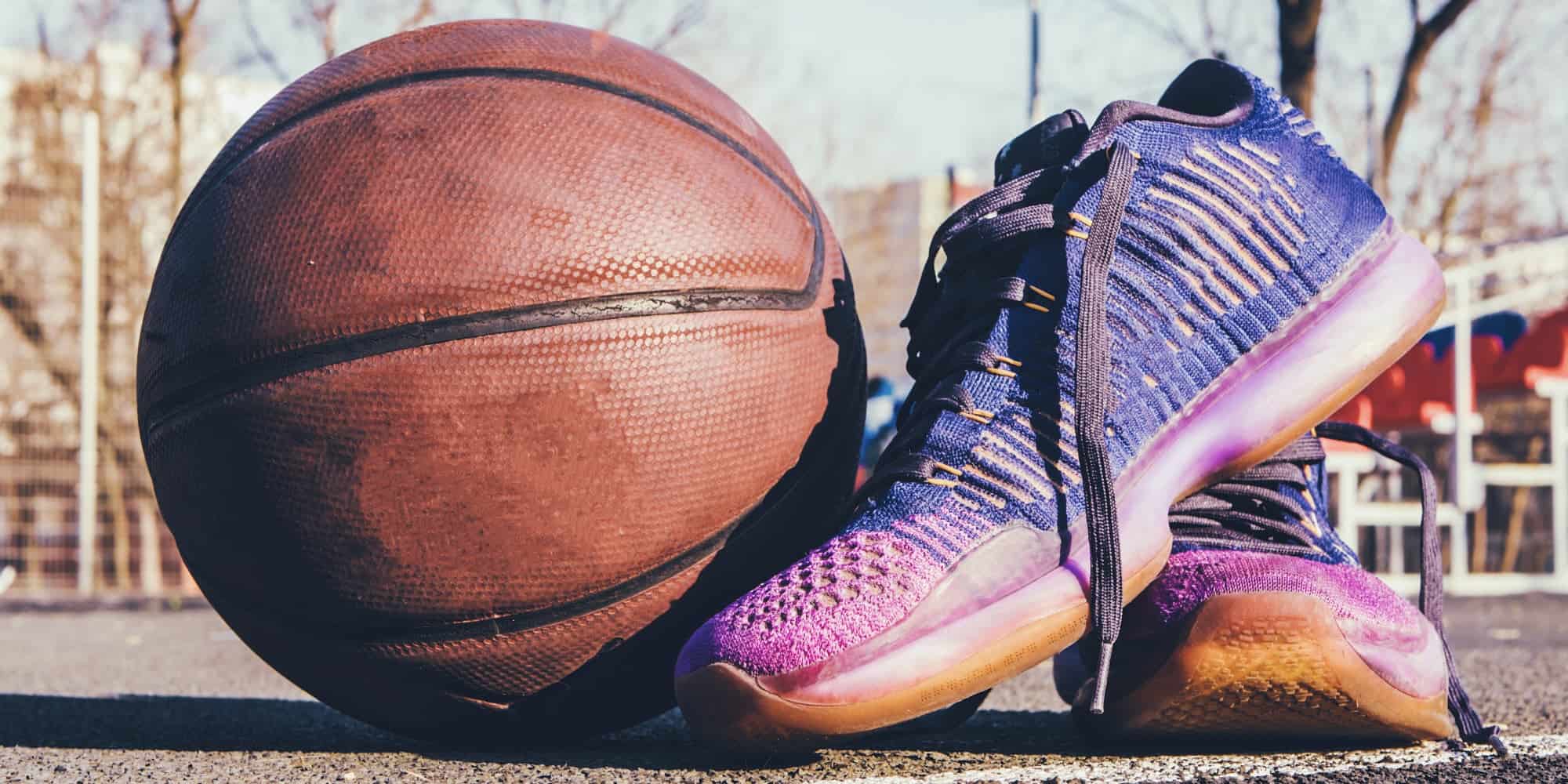Slipping on a brand new pair of basketball shoes will almost always cause some level of discomfort. Now anything excessive might mean you’ve got the wrong size or they’re just not the right shape for your feet, but it’s natural for new footwear to feel a little stiff or rub against skin.
So it’s important that before game day or your next tryout, you’re not wearing basketball shoes that haven’t been sufficiently broken into. You need to give them some time to try them out and let your feet get adjusted to them. Skip this part and you run the risk of getting blisters on your feet!
In this post, we’ll take a look at how you can naturally break in your new basketball shoes and discuss some ways to speed up the process.
Before You Buy New Basketball Shoes
But before that, let’s make sure you get the right shoes in the first place because some shoes aren’t designed for you no matter how hard you break them in.
Choose the Right Size
You need to understand your own feet’s preferences when it comes to the shoes they’ll be wearing.
First, and most importantly, you must make sure that you pick the right size. Wear tight shoes that are too small and your feet will be squeezed to the point of developing blisters on the toes and heel.
Wear new basketball shoes that are too big and your feet will slide around inside and they could easily come off while you’re playing basketball.
The best way to get the right size is not to simply buy shoes in your size, but to try them on before you buy. Many basketball shoes don’t run true to size but run big or small, meaning you can never be certain they’re a perfect fit until they’re on your feet.
If you’re buying online and can’t try them on first, be prepared to send them back unless they fit like a glove.
Choose the Right Type
Basketball shoes come in all kinds of shapes and styles. The last thing you should do is simply buy the pair of shoes your favorite player wears. Instead, consider how you’ll be using them.
For example, if you’re going to play street basketball, you want to buy outdoor basketball shoes that have soles that can handle rougher surfaces.
You also want to consider your play style. High top basketball shoes and mid top basketball shoes provide extra ankle support, whereas low top basketball shoes provide less but give your feet maximum freedom which can be beneficial for dribbling/ball handling.
Finally, if you have wide feet you want to make sure you get shoes that have wider fits than your average shoe.
Buy Ahead of Time
It’s tempting to suddenly splurge on a nice pair of basketball shoes the day before your big game or just before the new season. But that’s the last thing you should do. You’ll perform better in your ragged but comfortable shoes than a brand new pair of basketball shoes that look the part but are stiff and limited in flexibility.
Instead, buy them a few weeks in advance so you have time to practice with them and wear them in. That way, you’ll be performing at your peak come that important basketball game.
How To Break-in New Basketball Sneakers Naturally
Now assuming you’ve got a pair of sneakers that fit you properly and have left some time ahead of you, let’s discuss the best ways to break them naturally:
Phase 1: Light Activity
The phase which poses the greatest risk of developing blisters is when the shoes are brand spanking new. The last thing you want to do at this point is to go hard with them and wear them in a high intensity game.
Not only will it make it much more likely you’ll irritate your skin, but because you’re not used to how they feel, you also increase the risk of tripping up or spraining your ankle, for example.
So the first thing to do is just wear them casually. Wear them around the mall. Go for a light jogging session. Wear them around the house (assuming that’s ok).
The important part here is that you do what you can to minimize developing injuries or foot pain that will render you unable to wear them for a few days and delay the whole process. Things like wearing thick socks or moisturizing your feet’s skin can also reduce the chance of developing painful blisters.
Phase 2: Basketball Drills and Light Practice
While it might sound like it is sufficient to just walk or run around wearing your new basketball shoes, this isn’t going to be enough.
In the past we’ve talked about why basketball shoes don’t make good running shoes and vice versa. Running and playing basketball test your feet in completely different ways.
During basketball, there’s a lot of lateral (side-to-side) movement and more force in movements, which means your feet will more forcefully push against the outer edges inside your shoe.
To break in new basketball shoes properly, actually performing the kind of movements you’d make in a real playing situation is incredibly important.
So following light use of your new basketball shoes and stretching them for around one week, it’s time to turn it up a notch by wearing them for the drills and practice.
Phase 3: Play, play, play
The final phase is a much longer break-in phase. I’m not talking weeks, I’m talking months. Any basketball player will know that a shoe will keep getting comfier and comfier over time. That is, of course, before they start to wear out to the point their soles lack traction or their lining rips open.
How To Break In Basketball Shoes Faster
If you end up in a situation where you just don’t have enough time to break your new shoes in naturally, there are a few tricks you can use to make the process faster.
1. Soften Them Up With Your Hands
The first thing you can do is to soften up the shoes when you’re not even wearing them. Simply hold up one of the shoes by the heel in one hand and grip the other end of the shoe by the other. Proceed to gently twist and bend the shoes in different directions. This will make the shoe less rigid and the big advantage of this is that you can do this while you’re at home watching TV.
2. Use a shoe stretcher
Secondly, you can buy a 2-way shoe stretcher and stretch out the length and width of your shoes. This is especially good for those with wide feet who need a little extra breathing room inside the shoe.
3. Tie shoes up tightly
Finally, you can wear your shoes with the laces tied extra tight (though not too tight, of course). The logic behind this old method is that it stretches out your shoes’ fabric, and thus speeds up the break-in process.
Conclusion
It’s important to make sure you break in your new shoes before playing seriously. Depending on the fabric and construction of the shoes, sometimes it doesn’t take more than a few days for them to be sufficiently loosened up.
But either way, it’s recommended that you gradually increase the intensity at which you use them, in order to minimize the risk of irritating your skin or developing foot pain.
Finally, while everything can be done naturally, using your hands or buying a shoe stretcher can help speed up the whole process.
The more you wear basketball shoes, the more they become loose. That’s the first thing to remember. So, when you buy them in the store, you can’t walk right out with them. You will need about 5 to 10 sessions before the shoes become loose enough to work for you on your D-day.

